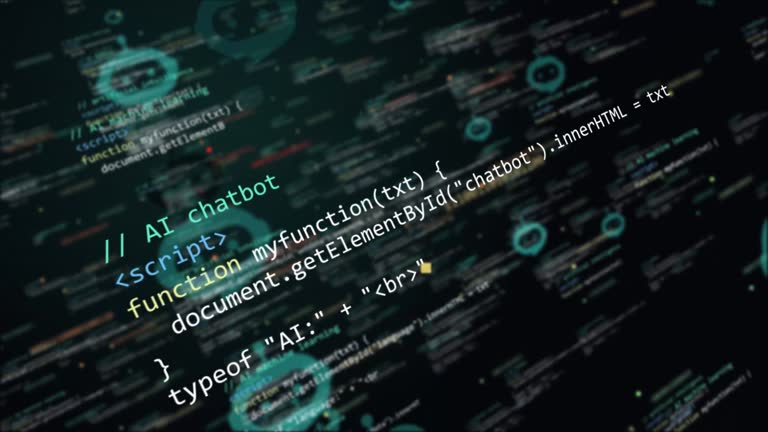In the contemporary world of fast-moving software development, the need to provide high-quality code within the least possible time frame is incredibly high. The rise of artificial intelligence in coding has brought about a new shift in how developers think about code refactoring. AI-powered tools promise to not only improve the pace of code revision but also the accuracy of the revision by suggesting improvements and automating monotonous tasks. Nevertheless, there is a need to better understand AI-powered code refactoring, as it is evident that achieving a balance between “efficiency” and “accuracy” is too intricate to achieve. The blend of automation alongside human interaction requires a conscious evaluation of how such technologies should be designed. This article aims to highlight important aspects of effective AI-based refactoring and provide recommendations on how to maximize its use.

Understanding Code Refactoring
Refactoring code is fundamental in software development, serving as the process of redeveloping existing code to enhance its quality without changing its external behavior. This practice maintains a well-structured codebase for effortless feature implementation and modifications in the future. The change instituted by refactoring is meant to improve the appearance, maintainability, and evolvability of the code without introducing any unintended problems.
A number of techniques, such as breaking complex logic into simpler components, dividing large functions into smaller ones, and improving variable names, are applied during the process of code refactoring. Apart from improving aesthetics, such practices enhance overall project longevity and sustainable team performance. Therefore, it is important that these core principles of code refactoring are adhered to by all professionals within the software development field.
The purpose of code refactoring can be categorized into several core objectives:
- Improving code readability and maintaining a consistent coding style.
- Reducing technical debt by addressing known code smells.
- Enhancing the scalability of the software by simplifying complex structures.
- Facilitating the onboarding of new team members who need to understand and work with the codebase.
- Enabling easier debugging and test coverage due to clearer code structures.
The Role of AI in Code Refactoring
Advancements in artificial intelligence are rapidly shifting the paradigm of software development, and AI is actively changing the domain of code refactoring. Thanks to the unparalleled speed at which AI can sift through copious amounts of code, programmers receive instant feedback along with proactive suggestions to refine their code. Employing natural language processing and machine learning, these tools detect patterns, conduct static code analysis, and recommend alterations that fit industry standards. The deployment of AI not only facilitates streamlined restructuring but also enhances the creativity of engineers by providing them with knowledge they would have otherwise missed. As a result, teams are able to use this technology to complement their talents while spending less time on mind-numbing work. Below is a summary of the benefits that AI brings to code refactoring:
| Benefit | Description |
|---|---|
| Increased Efficiency | AI tools can automate many repetitive refactoring tasks, saving time for developers. |
| Consistent Quality | AI ensures that code suggestions adhere to established coding standards. |
| Error Detection | Tools can help identify potential bugs and vulnerabilities during refactoring. |
| Better Resource Allocation | By reducing manual effort, teams can allocate resources to more complex issues. |
The implementation of automation tools brings a multitude of advantages to the development life cycle, especially while working on code refactoring. AI-powered refactoring tools boost productivity by taking care of tedious tasks, which gives developers the mental space for more creative thought. As an example, AI can flag inefficient algorithms and dead code instead of looking for them manually. Furthermore, it reduces the amount of mental effort required from developers to make better and more timely decisions. In any case, the optimization of this type of automation is crucial in order to harness its full benefits.

Balancing Efficiency and Accuracy
Although the accrued efficiencies from AI in code refactoring are commendable, there are downsides that cannot be ignored. One primary concern is the potential imprecision and mistakes that may occur if the AI misjudges a particular situation in the codebase. Developers always need to remain alert and evaluate the recommendations made by AI-based applications. Thus, it cannot be stressed enough that while productivity can be enhanced by AI, no degree of automation will be able to understand the nuances of the coding context. Therefore, refactoring strategies should advocate for an alliance between technology and human intelligence.
An over-reliance on AI for assistance with refactoring can create some issues that include:
- Inaccurate code suggestions that could introduce bugs.
- A lack of understanding of the original code’s intent and architecture.
- Encouraging complacency among developers in their coding practices.
- Failure to adapt the refactoring approach to project-specific needs.
Best Practices for Integrating AI in Refactoring
In order to maximize the benefits of AI tools during refactoring, developers should follow best practices that correspond with the goals and requirements of their specific projects. To begin with, choosing the most appropriate AI tool that meets the needs of the project and is able to provide adequate support is of utmost importance. In addition, teams need to train continuously to keep up with new and emerging AI opportunities and threats. One of the most useful strategies is to create an evaluative framework for assessing AI’s suggestions. Also, collaboration between AI tools and human developers should be encouraged, as it will improve the performance of the final output.
These are the things to remember when selecting an AI refactoring tool:
- Compatibility with existing development environments.
- Positive user reviews and case studies demonstrating effective results.
- Availability of customer support and extensive documentation.
- Customizable settings to cater to team-specific coding guidelines.
- Capacity to learn and improve over time as more code is processed.
Conclusion
The use of AI technology in automated code refactoring will vastly improve the productivity of software development. Even so, caution must be exercised as developers integrate such tools; attention to human oversight during the process is necessary. It’s not only about pace, but care also needs to be taken to ensure that the code remains intact in order to maintain its accuracy. While AI augmentation is being adopted, a deeper appreciation of what effective code refactoring is and how it can be accomplished collaboratively will be helpful. This will allow the organization to set new goals in the quality of software produced using the combination of AI and human skills.
Frequently Asked Questions
- What is code refactoring? Code refactoring involves restructuring existing code without altering its external behavior to improve its quality.
- How does AI benefit code refactoring? AI enhances code refactoring by automating repetitive tasks and providing intelligent suggestions for improving code quality.
- What are the risks of using AI for code refactoring? The main risks include over-reliance on AI, which could result in inaccuracies or bugs, and neglecting human judgment in decision-making.
- Should developers always trust AI suggestions? No, developers should validate AI recommendations, as human expertise is crucial for context-sensitive decision-making.
- How can I choose the right AI tool for code refactoring? Look for tools that align with your project needs, have positive reviews, and provide strong customer support.